#repurposed material furnishings
Text
Urban Woodshed

Website: https://www.urbanwoodshed.com
Address: Saskatoon, Saskatchewan, Canada
Urban Woodshed specializes in creating unique, handmade home décor items. The company's products, often crafted from repurposed materials like whiskey barrels and locally harvested timber, offer a blend of sustainability and style. They cater to those looking to add a touch of warmth and individuality to their living spaces.
Facebook: https://www.facebook.com/urbanwoodshed/
Instagram: https://www.instagram.com/woodshedurban
Keywords:
rustic home accents
whiskey barrel furniture
sustainable home accessories
nature inspired home accessories
nature inspired interior design
creative home solutions
personalized home accessories
handcrafted wooden products
eco conscious interior design
handmade home decor
repurposed material furnishings
custom decor pieces
whiskey barrel creations
local timber products
unique home styling
eco friendly dcor solutions
artisan crafted home items
bespoke wooden dcor
sustainable living dcor
eco conscious home styling
unique interior decorations
artisanal home furnishings
locally sourced dcor
handmade wooden accents
reclaimed wood home dcor
custom designed furnishings
sustainable living accents
eco friendly home styling
local craftsmanship dcor
unique sustainable furnishings
repurposed wood creations
custom made home accents
artisan designed home items
wooden dcor craftsmanship
sustainable living accessories
whiskey barrel home pieces
nature themed home styling
local artisans home goods
handcrafted sustainable items
reclaimed timber home accessories
bespoke sustainable furnishings
artisanal woodwork for homes
locally crafted interior dcor
creative wooden home solutions
eco friendly custom designs
rustic handmade home items
personalized sustainable living
whiskey barrel home accents
nature inspired custom pieces
saskatoon handmade home dcor
sustainable home accessories in saskatchewan
repurposed material furnishings saskatoon
custom decor pieces saskatchewan
whiskey barrel creations in saskatoon
local timber products saskatchewan
unique home styling saskatoon
eco friendly dcor solutions in saskatchewan
artisan crafted home items saskatoon
rustic home accents saskatchewan
bespoke wooden dcor saskatoon
personalized home accessories in saskatchewan
sustainable living dcor saskatoon
eco conscious home styling in saskatchewan
unique interior decorations saskatoon
handcrafted wooden products saskatchewan
creative home solutions in saskatoon
artisanal home furnishings saskatchewan
locally sourced dcor saskatoon
nature inspired home accessories in saskatchewan
handmade home dcor near me
sustainable home accessories near me
repurposed material furnishings near me
custom decor pieces near me
whiskey barrel creations near me
local timber products near me
unique home styling near me
eco friendly dcor solutions near me
artisan crafted home items near me
rustic home accents near me
bespoke wooden dcor near me
personalized home accessories near me
sustainable living dcor near me
eco conscious home styling near me
unique interior decorations near me
handcrafted wooden products near me
creative home solutions near me
artisanal home furnishings near me
locally sourced dcor near me
nature inspired home accessories near me
#rustic home accents#whiskey barrel furniture#sustainable home accessories#nature inspired home accessories#nature inspired interior design#creative home solutions#personalized home accessories#handcrafted wooden products#eco conscious interior design#handmade home decor#repurposed material furnishings#custom decor pieces#whiskey barrel creations#local timber products#unique home styling#eco friendly dcor solutions#artisan crafted home items#bespoke wooden dcor#sustainable living dcor#eco conscious home styling#unique interior decorations#artisanal home furnishings#locally sourced dcor#handmade wooden accents#reclaimed wood home dcor#custom designed furnishings#sustainable living accents#eco friendly home styling#local craftsmanship dcor#unique sustainable furnishings
1 note
·
View note
Text
When we think of sustainable materials, bamboo, cork, recycled stone and reclaimed teak often come to mind. These building and surface materials are used extensively in both residential and commercial projects, enough to solidify them as the eco-friendly future of established architectural practices.
But what if we went even further? Creative and experimental designers worldwide are embracing much more unusual sustainable materials in a wide range of projects, be these sturdy floorboards and insulating panels, or small-scale decorative elements such as lamps, trays, vases and other furnishings. With designs hailing from Singapore and Indonesia, as well as distant studios in Italy and Palestine, here are the materials of tomorrow.
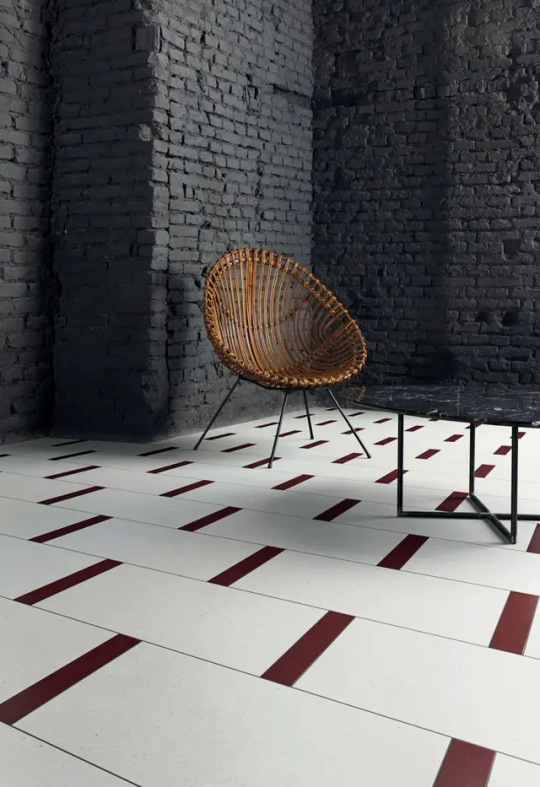
Mogu’s mycelium floor tiles
Mushroom filaments may not seem like the sturdiest base for hardwearing floors, but the Italian designers behind Mogu would argue otherwise. Transformed into resilient tiles appropriate for luxury residences and even commercial spaces, the mycelium structure is topped with a layer of bio-based resin, granting it resistance to scratches and abrasions rivalling traditional flooring materials.
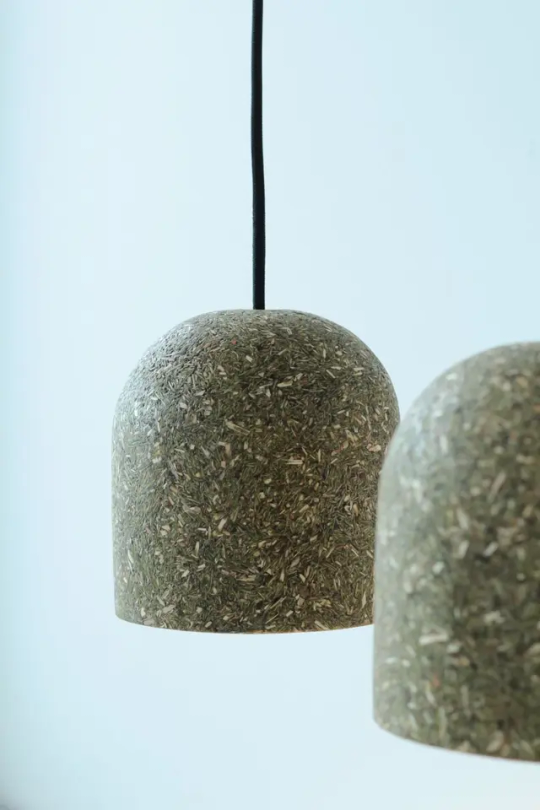
Orange peel and pine needles make up the sustainable lampshades by Caracara Collective
Turning orange peel into useable furnishings and décor pieces is no small feat, yet the people behind the circularity-focused Caracara Collective in Finland have mastered this singular art. Inspired by the abundance of the natural, inherently sustainable materials around them, the designers created a series of lampshades made of orange peel, as well as pine needles from discarded Christmas trees.
As the collective puts it: “It takes around 20 squeezed oranges to create one lampshade. In other words, each lampshade is the by-product of someone drinking two litres of orange juice.”
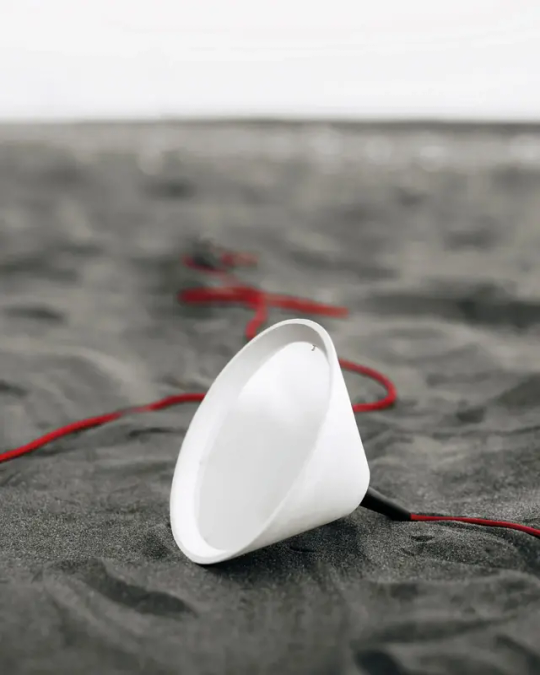
Markos Design’s Ostra lamp, made of discarded oyster shells
Discarded oyster shells are similarly repurposed on the island of Cyprus, transformed by Markos Design into Ostra, a ceramic-like biomaterial. Ostra is worked into statement lamp designs, naturally hardwearing thanks to the oysters’ high concentration of calcium carbonate, which also lends cement and concrete considerable strength.
#solarpunk#solar punk#reculture#solarpunk aesthetic#eco-design#materials innovation#solarpunk futures
51 notes
·
View notes
Text

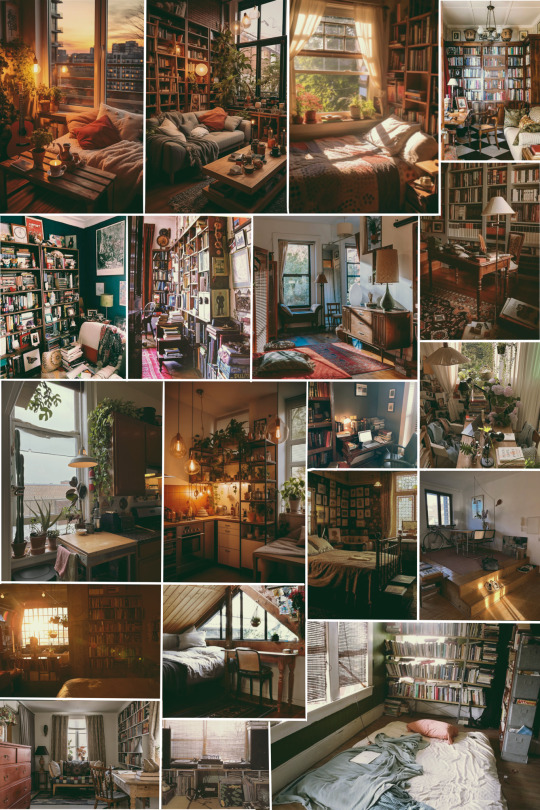
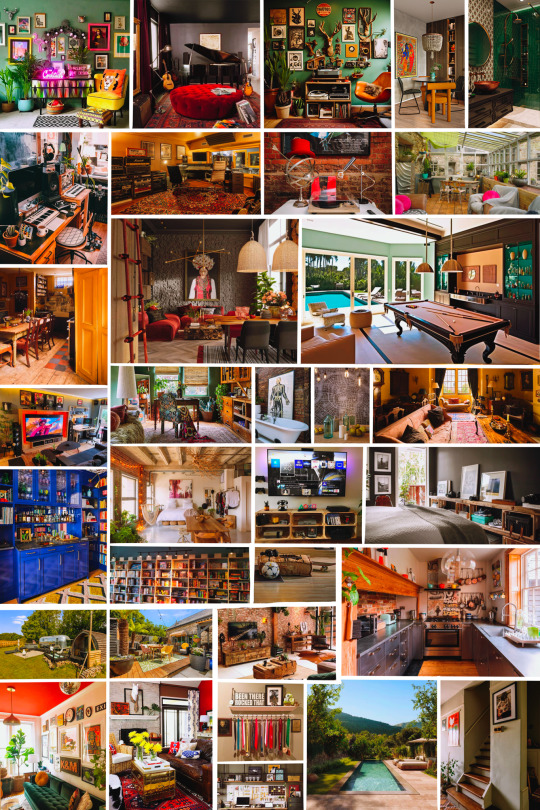

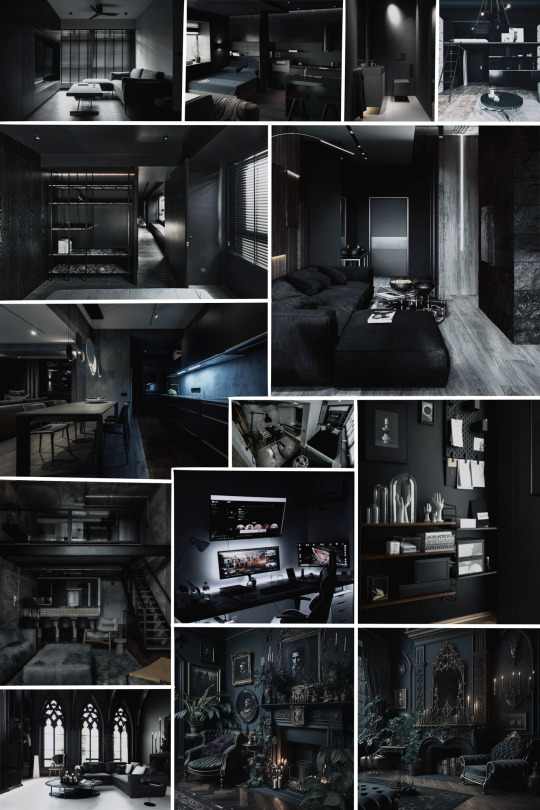
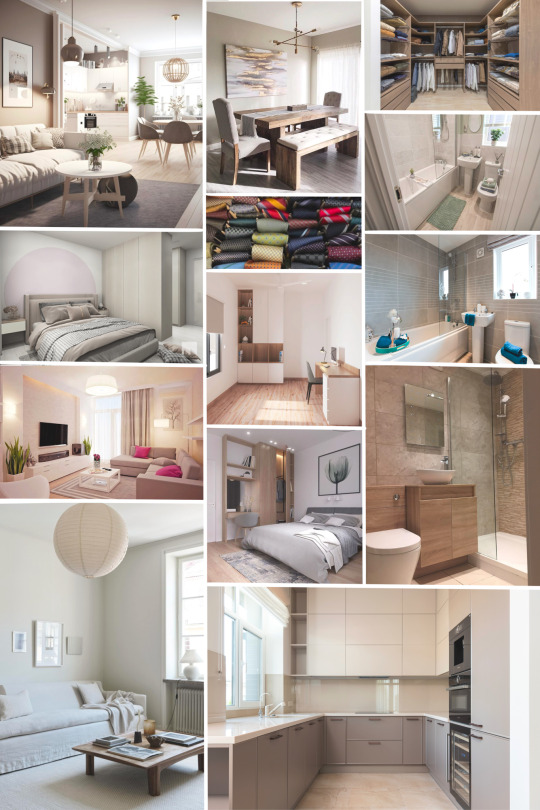
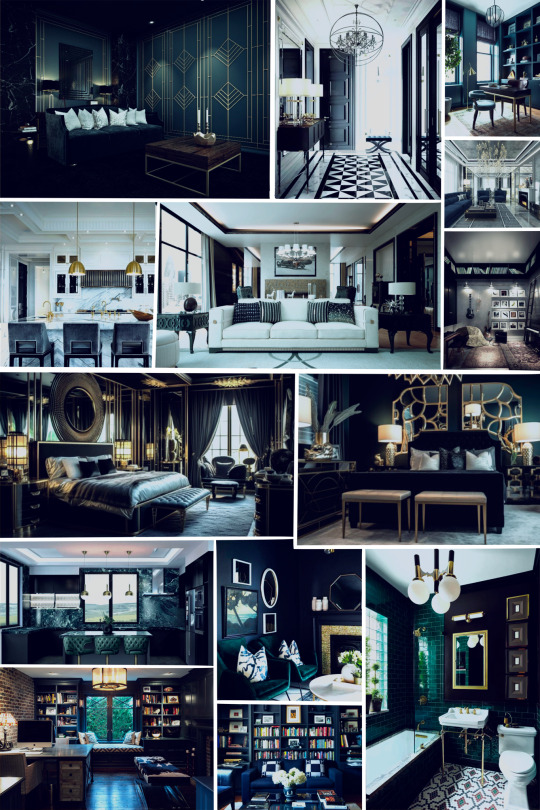
Marauders x interior designs, reference boards and a long post below with explanations on the style selection and living conditions! (1.6K words)
Sirius
Interior design style: Industrial
Style rationale: cool, dark tones with a stylish mixture of rough materials: bricks, concrete, metals, and a great view. The ambiguity of the manmade hardware meeting all the natural light from the large windows; the grand spaces suitable of hosting a lot of people paired with an arrogant, unwelcoming (scary even) atmosphere. Overall powerful masculine energy with edgy, rebellious vibes. Effortlessly stylish, oozes confidence, creative and commands authority. Not everyone’s cup of tea, only a few can see the appeal and the endless possibilities of this multipurpose factory building, which is capable of way more than originally intended for.
Residence characteristics: Penthouse, 4 bedrooms, 4 other purpose rooms, 2.5 bathrooms, rooftop terrace. Renovated/repurposed old factory building in the city, with a pub/night club downstairs, and the middle part of the building leased as office area. Sirius is the only one who actually lives in the building, which he also owns. (Meaning no neighbours!) The building has a cargo lift, which Sirius uses to park his motorbike on the rooftop garage area. A separated part of the rooftop area is used by the pub/nightclub as a warehouse/storage, the other open-air part of it is used solely by Sirius, that he can access directly from his apartment too.
Remus
Interior design style: Eclectic (unintentional)
Style rationale: cramped with books and various interesting artifacts, second-hand mismatched furniture, light academia aesthetic, overall nerdy hipster energy. Warm earth tones, once vibrant but now faded colour palette. Budget and function over style attitude. Cozy and welcoming vibes (people pleaser much?). Plant enthusiasm.
Residence characteristics: tiny 1 bedroom apartment, 1 bathroom, small French balcony (used as a herb garden). Remus is on a very tight budget, when he managed to buy the flat, he only had a mattress, two makeshift bookshelves and a table with two chairs the previous tenant had left there. He saved up for years to get a nice and fully functioning modern kitchen, but other than that, the apartment is furnished with antiques he inherited from or was gifted by old relatives. He has way too many books, and he treasures everything he gets as a gift from others, however useless the item is. He is a moderately successful plant dad, because his neighbour's cat somehow always manages to destroy his little balcony garden. All but one of his neighbours are elderly citizens, who all find Remus a very polite and kind man – completely unaware that he is the one who loudly plays the guitar/cello and not the only other younger person in the building. Remus feels no obligation to dispel their misconceptions.
James
Interior design style: Eclectic (intentional)
Style rationale: Big personality, vibrant, bold colours. Proudly presents their identity and personal accomplishments. Extroverted, creative, chaotic, but fun energy. Warm and welcoming atmosphere with rustic wood elements paired with the collection of random objects. Overall very lively and artsy vibe. Can easily labelled as too much and pompous. It takes some time to see through the flashiness to discover the deep devotion to honoring (ethnic) heritage, familial ties and loved ones behind all the showcased extravaganzas.
Residence characteristics: Large family house in the suburbs, 4 bedrooms, 2 bathrooms, 4 other purpose rooms, terrace, pool, 1 barn, 1 garage, 2 acres of land. James has never really moved out from Potter Manor, as he went to boarding school and inherited the property from his parents a little after graduation. He deeply loves his home and respects his heritage and memories a lot, but he is too much of a character to resist tailoring parts of the house and the interior to his taste. He has a collection of unconventional things (street signs, vinyls, tire rims, Liverpool sports memorabilia, cold war era propaganda posters, maps, festival tickets, foreign label beer cans, etc.), proudly presented alongside his sports trophies, medals, and musical awards. He thrives for the company of others, therefore the house could easily serve as an entertainment centre: he has the biggest of TVs, all gaming consoles, the widest variety of board games, a pool & foosball table, a pool in the garden alongside professional grill and cocktail bar equipment. He also has a fully functioning, soundproofed professional level studio in his basement with a lot of musical instruments and sound engineering & recording equipment. He has a treehouse and an old VW minivan repurposed as a summer guestroom in the garden. Sirius has his own dedicated bedroom, which is left untouched (just as the room of James’ parents).
Lily
Interior design style: Boho Chic
Style rationale: Girly, playful, kind. Plants, plants, plants everywhere, embracing the closeness to nature, fun textures, floral patterns, personally significant items. Non-conformist, free-spirited energy. Quirky, yet tasteful décor with an overall earth toned and pastel colour palette. Pretty and functional furniture, lot of pillows and soft blankets. Sweet and floral scents, calm, cultured and cozy vibes.
Residence characteristics: studio apartment in the city, 1.5 bedrooms, 1 bathroom, balcony. Lily’s flat is located in a fast-paced, busy and a little unpleasant part of the city, but it is near her workplace and has easy access to several public transport options. Her balcony is facing the inner yard of the building, which she managed to bloom up with conscious effort for years against all odds and resistance of obnoxious landlords. She is friendly towards all of her neighbours - even that weird loner guy in that dark basement apartment, who somehow always have the perfect anti-bug compounds at hand and seems to be very fond of Lily only. She has shared the flat with her sister until Petunia moved in with her fiancé, Vernon. Her bedroom was transformed into a study room. Lily has a soft spot for vintage furniture and interiors, but in certain areas she values function over style. She keeps her apartment tidy and organized. She is the most successful plant mom, who dreams about having her own garden.
Peter
Interior design style: Contemporary
Style rationale: Beige and gray color palette, designed to be average enough to appeal to the widest possible range of people. The go-to style of every home stager or AirBnB property owner. Clean, basic, convenient, a little boring even. Interior design lacks personality, the selection of the decor elements is usually driven by fitting the general aesthetic and looking luxurious and not by personal preference. Bland and plain vibes. Looks functional and comfortable and can easily hide structural or other problems with the apartment with clever selection and placement of often built-in furniture that the new owner won’t notice the issues until it’s too late.
Residence characteristics: newly built apartment, 1 bedroom with large walk-in wardrobe, 1 bathroom, dedicated underground parking space. Peter made a great deal with his apartment: he could buy the flat at the best and most early bird discount price after he was informed about the planned real estate construction project by overhearing a conversation regarding the status of obtaining the necessary building permits. He paid in advance the full amount determined in the planning phase of the project, and by the time the construction was finished, the apartment has tripled in value due to inflation rates skyrocketing. He moved into the turnkey property and hasn’t changed a thing ever since. The only pop of colour and testament of his real personality is his walk-in wardrobe and collection of quirky ties.
Snape
Interior design style: (Dark) Minimalist, partly gothic
Style rationale: dark, organized, focused. Basic shapes and textures, simple materials, little to no decoration to ensure lack of stimulation and distractions. Less is more attitude. Can be frustrating to others, but held in high regards by likeminded people. Monochrome, desaturated, mostly black colour palette. Unpleasant, unsettling, overwhelming, bleak, well-structured and functional. Unparalleled practicality. A vibrant colour or boho item would look very out of place, and would eventually lose its brightness and liveliness because the minimalist environment will slowly oppress it with its own defining features. Unwelcoming, not interested in others (and a little depressing) vibe.
Residence characteristics: small 1 bedroom basement apartment, 1 bathroom, exclusive access to cellar area of the building. Snape is overly organized, values function over design. He finds the brutal simplicity of his interior soothing and calming, and prefers practicality over flashiness. He is comfortable in his gloomy flat, which is tailored to his needs only. No guests are expected ever. He utilizes the full cellar area of the building for his own purposes, (probably) rent free. No one knows exactly what he does there, but as he has a repelling enough aura around him, they rather don't bother him. He hates all his neighbours with burning passion, except that nice redhaired girl adamantly trying to make a pretty indoor garden in the building's yard. The only actual colour and decoration in his apartment is a peace lily in a bright green pot, that was gifted to him by Lily. He secretly likes the magnitude of gothic buildings and started to admire their aesthetic value as he spends a large amount of time in a gothic environment (dark academia vibes!) for his day job.
Regulus
Interior design style: Art Deco
Style rationale: expensive, luxurious, fancy. A more modern and trendier take on the traditional, 18th- and 19th-century European interior design style of Grimmauld Place.
Residence characteristics: large apartment in The City, 2 bedrooms, 4 other purpose rooms, 3 bathrooms, balcony. Regulus got the flat as a graduation present from his parents, neither the location or the interior design was his choice, but was happy to move there (the assumptions regarding his style preferences were spot on). However, he spends more time at his family home than his own, as he likes the company of their family's butler, Kreatcher too much.
Some links: more thoughts about Sirius and Remus' interior preference; lineart and coloured art of Sirius in his flat.
Bonus: basic floorplan of Sirius' flat I made in Paint. It's probably not scaled right, and I'm not sure if it's plausible in an architectural point of view, but I imagine it to be something like this:
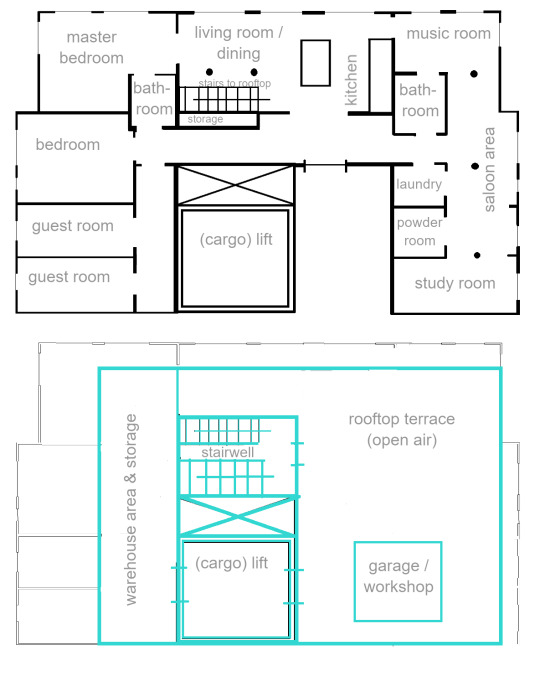
If any of you is an actual architect or is more skilled in 3D rendition, I'd be forever grateful if you could pick up my design!😘
#sirius black#remus lupin#james potter#lily evans#peter pettigrew#severus snape#regulus black#marauders#reference boards#headcanons#lau doesn't write because of reasons#rockstar au#modern au
25 notes
·
View notes
Text
Siheyuan 四合院

The sprawling traditional Chinese courtyard home, known as the Siheyuan features several buildings built around a series of courtyards.

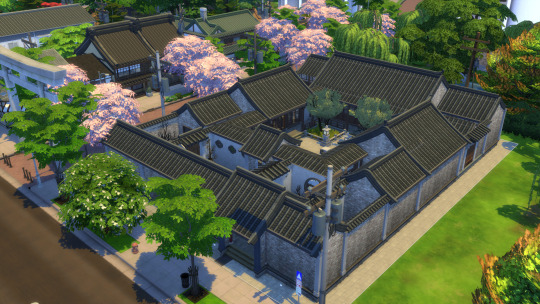
The main door of the Siheyuan is usually located in the lower south corner of the house, and opens to a forecourt that leads to another centrally located doorway that leads to the house proper. This stops passersby from being able to look into the main spaces of the house.
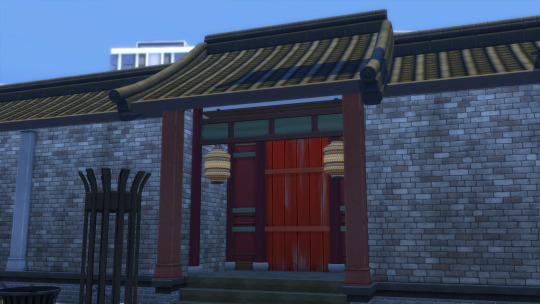
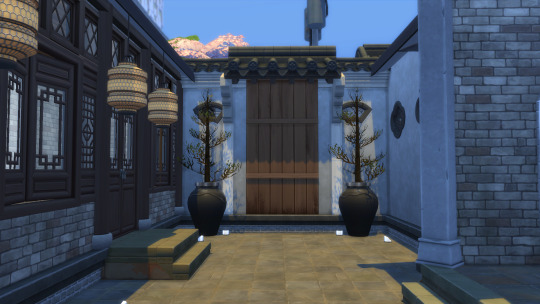
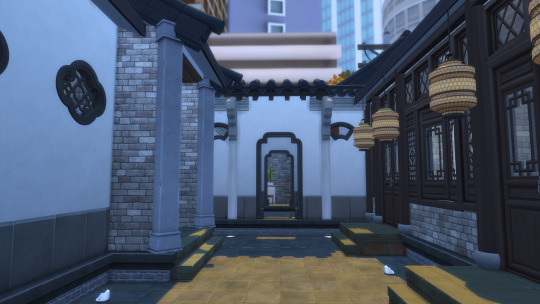
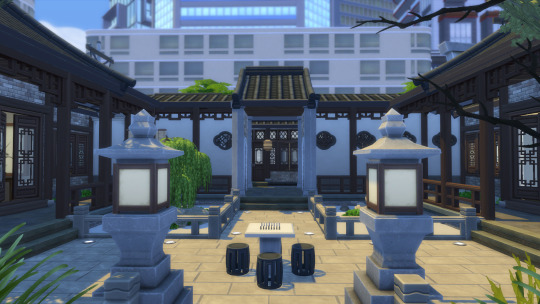
This property, known as the Austere Official's Home, has been restored and given a modern facelift, while still in keeping to its classical roots. Much of the home's layout is based on ancient beliefs of how energy moves in a space, while the overall home itself represents the Chinese obsession with walled spaces, with a Siheyuan often consisting of walls within walls of walled yards, gardens and liminal spaces, connected by a covered walkway.
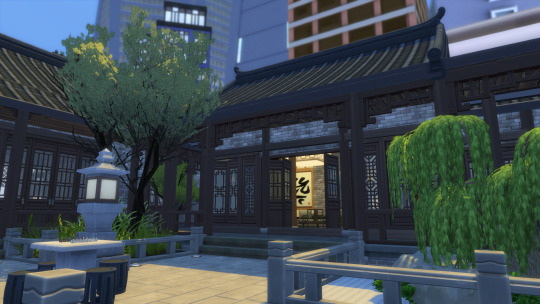
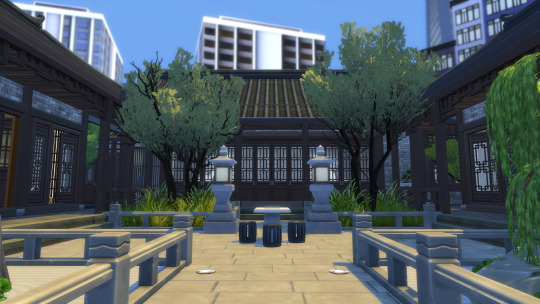
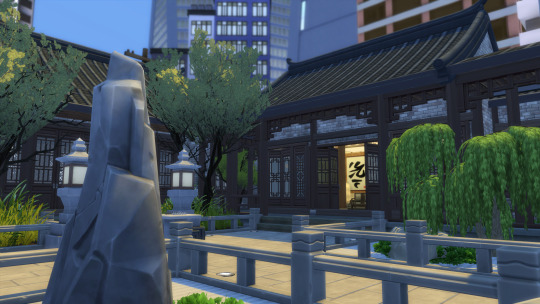
Contemporary Chinese interior design is a fascinating design niche, that can draw on design principles and material use anywhere from the Qing to the Han Dynasty, and Chinese aesthetics can be anywhere from ostentatious and overwhelming to refined and restrained.
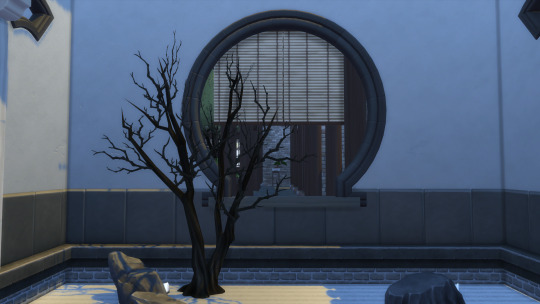
Many associate Chinese interior aesthetics with red lacquer, silk furnishings, whimsical carpentry and gilded surfaces in excess but more often than not, classical Chinese interiors are more likely to feature more sedate tones of dark grey, black and deep brown, with hardwood furnishings in clear lacquer, with grey brick walls. or white plaster walls, as well as stone floors and granite paved exterior spaces.

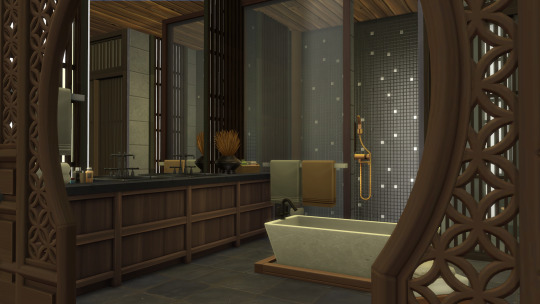
The Austere Official's Home's makeover is based on a popular movement in Chinese interior design that draws on more consistent and refined use of materials and colours, with a recognisably Chinese aesthetic, while incorporating more contemporary ideas on the usage of space. A style popular with hotels in particular, being fairly accessible to international palettes while still being "Chinese" in feel.
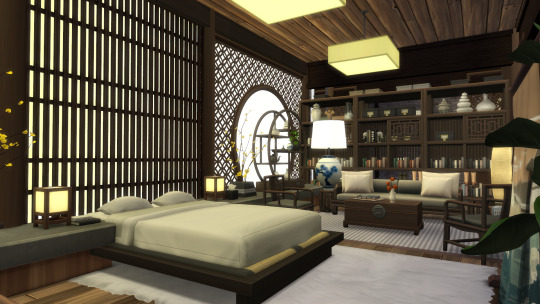

Many Siheyuans require a lot of retro fitting and renovation to match our modern use of interiors, however. For instance, classical Chinese homes did not have living rooms, or dining rooms, or in fact, rooms at all. Chinese architecture typically does not rely on load bearing walls to support the structure, and as such, do not have the division of space seen in Western builds. Chinese spaces are therefore riddled with supporting wooden columns, which are joined by dividing screens and folding doors that create the "rooms" of a building, with the whole carpentry being held down by a wonderfully heavy and graceful roof. This actually makes them fairly earthquake resistant structures.

Typically this means a building in the Siheyuan is all encompassing in its function. It features a bedchamber, a study and a reception hall. Things like dining and ablutions are restricted to furniture and wherever they are placed. How this translates into a modern restored interior is interesting. For this build, much like a shell challenge I kept the structural pillars intact, while moving around the divider walls to reconfigure the space, while buildings can now be repurposed to house the rooms modern inhabitants would need.

Thank you for reading! 谢谢
23 notes
·
View notes
Text
Rejuvenate Your Space: Amato Furniture’s Skill at Furniture Reupholstery in NYC
Rejuvenate Your Space: Amato Furniture’s Skill at Furniture Reupholstery in NYC
In the heart of New York’s volatile and always changing metropolis, it is crucial to maintain our living areas chic and welcoming. Furniture reupholstery is a revolutionary way to give your treasured pieces new life, whether they are cherished antiques or modern pieces that have seen better days. We at Amato Furniture are proud of our creative approach to reupholstering furniture in New York City. We go over the advantages of this craft in this tutorial, along with how our knowledge can breathe new life into your living area.
The Need of Reupholstering Furniture
Furniture reupholstery is a classic and environmentally friendly method that involves giving it a new lease of life by changing the padding and fabric and, if needed, updating or repairing the frame. Through this method, you can modernize and personalize your furniture to fit your changing tastes while also preserving its sentimental significance.

The Benefits of Selecting Amato Furnishings for Upholstery
1. Preserving Sentimental Value:
It is common knowledge that furniture has sentimental significance.
Each piece is carefully crafted by our talented artisans, maintaining its distinct character and background.
2. Personalization and Customization:
Select from a large selection of textiles to fit your tastes and style.
For a genuinely unique touch, customize the design components, such as the finishes and trims.
3. Environmental Sustainability:
Reupholstering furniture minimizes waste and uses less new materials, making it an environmentally beneficial option.
Come along with us to support a more conscientious and environmentally friendly method of outfitting.
4. Cost-Effective Alternative:
Replumbing furniture is frequently a more economical option than buying new.
Benefit from new and updated components without going over budget.
The Way We Work at Amato Furniture
1. Consultation and Assessment:
To talk about your vision and look into fabric alternatives, schedule a consultation.
Our professionals evaluate the furniture’s state and offer suggestions.
2. Customization and Fabric Selection:
A wide array of superior textiles, from traditional to modern, are available for selection.
Talk about the design features and customize the reupholstery to suit your tastes.
3. Craftsmanship and Attention to Detail:
Each piece is painstakingly reupholstered by our talented artisans.
In order to guarantee longevity and functionality, structural repairs are carried out.
4. Delivery and Placement:
We make sure your revived furniture is delivered and placed in your room on time when the reupholstery is finished.

Amato Furniture Will Take Your Living Area to New Heights
At Amato Furniture, we think that furniture should be timeless and a reflection of your personal taste. Our dedication to quality in NYC furniture reupholstery is based on sustainability, customization, and artistry.
Visit��Amato Furniture to learn more about our offerings, have a look at our portfolio, and start the process of repurposing furniture to create a beautiful, artistic update for your home.
2 notes
·
View notes
Text
The High Priestess
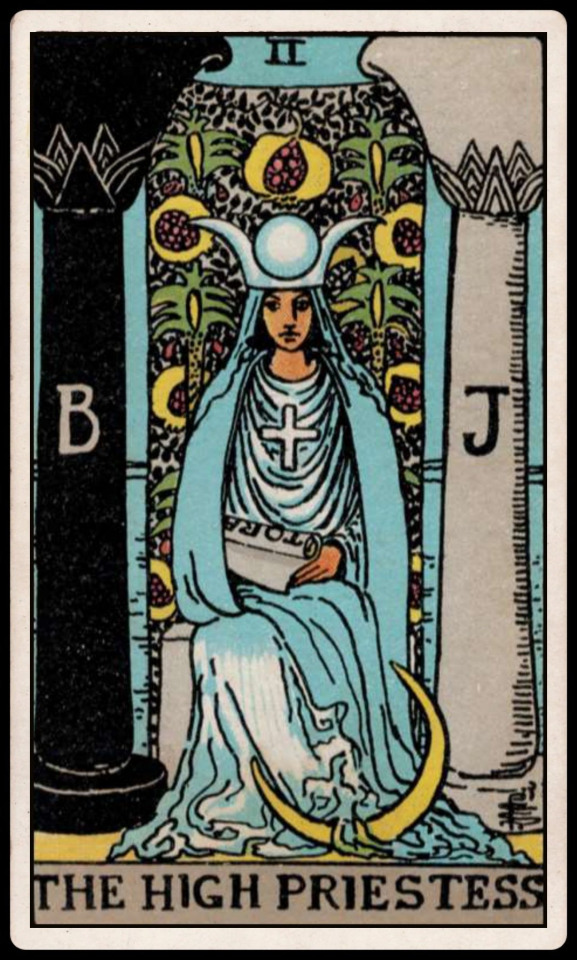
The High Priestess sits in front of a thin veil decorated with pomegranates, though for some reason the imagery has always reminded me of peaches split open with the pit showing... The veil represents the separation between the conscious and subconscious realms, that which can be seen and that which cannot be seen. The veil’s overall purpose is served, keeping casual onlookers out. Only the initiated may enter. The pomegranates symbolize abundance, fertility and the divine feminine. They evoke the memory of Persephone, who ate a pomegranate seed in the underworld and was forced to return to the underworld for months at a time for the rest of her life. On both sides of The High Priestess stand two pillars, marking the entrance to this sacred, mystical temple. One pillar is black with the letter B (Boaz, meaning ‘in his strength’) and the other is white with the letter J (Jachin, meaning ‘he will establish’). The black and white colors of the pillars symbolize duality, between the masculine and feminine or darkness and light, proposing that knowledge and acceptance of duality are required to exist within this sacred space. The High Priestess wears a blue robe with a cross on her chest, as well as a horned diadem (a pretentious way of saying a crown), all serve as symbols of her divine knowledge and status as a divine ruler. In her lap, she holds a scroll with the letter TORA, signifying the Greater Law. It is partly covered, signifying that this knowledge she possesses is sacred knowledge. This depiction in the card demonstrates to viewers that the knowledge that The High Priestess has will only be revealed when one is ready to look beyond the material realm. In addition, the crescent moon at her feet symbolizes her connection with her feminine side, which provide her with her intuition.
-
Hi all. Long time no talk. Life really swept me away for a while and I had only been able to write bits in pieces of my life down in my diary.
A lot has happened. I’ve discovered a lot; and not just academically.
The apartment that I told you all about last time I wrote is now fully furnished. I’ve got a lovely patio set that I sit out and read on quite often. When I’m lucky enough, I watch the sunrise and the sunset there too. I found this really cool desk off of Facebook Marketplace which is a repurposed vintage window frame. It’s this beautiful sharp shade of blue. I have a comfy yellow desk chair to sit and work in as well. I hate the color combination of blue and yellow for obvious reasons (go green) but it compliments my yellow night stand well. I’ve also got a hammock with shades of purple, pink, green, and white. I like to eat fruit and sway in it. I also installed some colored lights which has made the place feel a lot more vibe-y. Oh, and I’ve got some cool posters from Tabitha Arnold too. Y’all should check her out and support her! She’s a fantastic artist.
Speaking of artists, here are two more collages that I made for the class I'm taking:


My plants are doing well. I’ve resurrected my mint plant back from the dead multiple times. My rosemary, sage, rose, and swiss cheese plants have held up well. I’ve also added a jade plant, a bamboo plant, some orange flowering plant, and an inch plant to the mix. I want to get more but I’m trying to practice self-control…
I chose the high priestess card though because it’s the card I feel most connected to right now. I feel much better in trusting my own intuition these days. The summer had so many twists and turns to it and boy, did I learn quite a bit. My research-oriented brain forms these hypothesizes and after time passes and data is gathered, I find that I knew things before I ever even had the proof. It’s funny how it works like that.
Actually, we’re just coming out of the winter and entering summer here, but in my mind, it’s fall. It feels like fall. In the nine months that I’ve been here, I’ve lived through my winter, my spring, my summer, and now I’m beginning my fall.
The winter period of my life here was nice, I got to live high up on the volcano and lived in a still matter until my spring came and I began to thaw. In spring, I dug up my roots and planted seeds elsewhere. My growth was slow and then before I knew it, summer came. It was intense. When it got to be too much to handle, I fled home.


The week I spent back in the states was just as transformative as these past nine months; I really saw things from a different perspective being back after being away for as long as I’d been gone. It felt good to feel the familiar though. It felt good to see people and to be around those that I could trust, not just through a screen like I’d grown accustomed to, but in person. It was such a relief to feel the familiarity of family. I was so happy to eat a Greek salad, made the right way, and to hike around Cranbrook. It had just rained, and it was so misty, quiet, and peaceful. I was so happy to drink palomas at Amici’s and then Diet Coke (none of that Coke Zero bullshit) at 24 with Sam and Clayton. It felt like old times. My train ride to Chicago was rough, but my seatmate was kind. I felt so much joy when I finally got to see everyone in Chicago. Nolan and I got lunch at Nookies and we almost melted in the outdoor seating section. Casey and I had a lovely walk and we went to see a psychic. We celebrated my tether’s 24th which was a blast. Nolan and I also got Indian food and sat out by the fire in the middle of the night before I had to leave to catch my flight. It was so good to be with them and it was so hard to leave. The psychic told me that I’d meet someone very important to my journey named Micheal, and my Uber to the airport ended up being named Micheal, so can we really say psychics are scammers?



When I got back to El Salvador after being in the states, I hit the ground running. I kept busy and did as much as I could in the name of research.




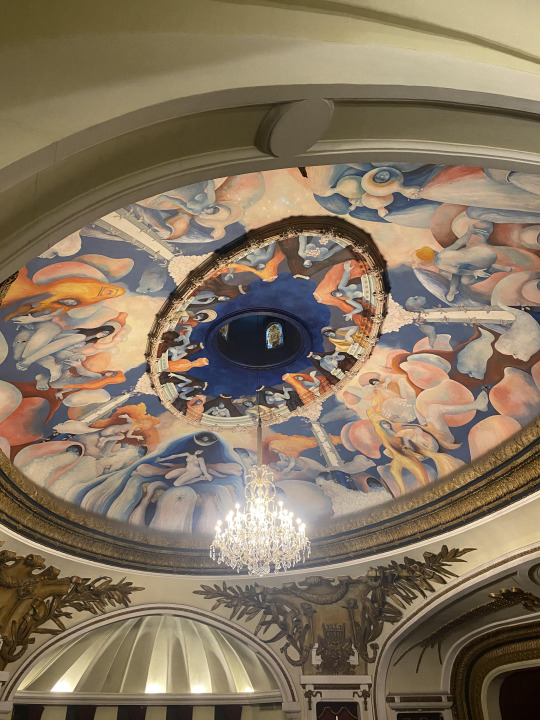


And before I knew it, Sarah came! Our time together was interrupted by a machista who’s actions were as reckless as his words… Again, the psychic I saw in Chicago ended up being right about another thing… But nonetheless we found joy in the little moments and created memories that will last a lifetime. It was hard to say goodbye to her when she left.

The next day I started substitute teaching AP Comparative Government at a bilingual school. It was quite the experience! I did that for two weeks.


Funnily enough, those two weeks were also extremely transformative. I forced myself to grow up, in a lot of ways. My last day subbing, Evelyn, some girls affiliated with the CIS, and I went to the beach. We had a lot of fun. I made us quite the pasta dish with ingredients that we managed to gather on the trek out.




Since then, I’ve just been doing touristy stuff, doing more research stuff, working on my final paper for my class, and looking for jobs. I went to a networking event held by the embassy, and it was actually a lot of fun. I got to catch up with some other Fulbrighters and laugh about life.



Going back to my metaphor, and how I’m in my Fall Era ™, some of the seeds I planted in the spring have finally begun to bear fruit. I got into the graduate studies program that I applied to at the UCA! For the next three or so years, I’ll be working towards my master’s degree in Theology… Which is… So ironic and crazy given everything… But it’s the path I’ve found myself down and I feel really excited about all that there is to come. I’m also letting go of a lot of things like the trees let go of their leaves this time of the year. It feels so good to just let some things fall away from my life and to cultivate space for new growth in the coming seasons. In the past I’d be more melancholy about it all, but it feels like this weight is being lifted off my shoulders and I’m so thankful to be in this phase of my life.
I think that’s pretty much it? Other than that I’m just getting ready to head back home for the holidays. But I have a flight back down here scheduled for January 7th so I won’t be gone from here long. I’m excited to see all of you guys back home. And I cannot wait to be cold for once instead of always being hot!

youtube

youtube

youtube
Z
3 notes
·
View notes
Text
DIY vs Hiring an Interior Designer: Making the Right Choice
When it comes to designing your living space, the decision between tackling the project yourself or hiring a professional interior designer can be daunting. Whether you’re moving into a new home or just looking to refresh your current space, both approaches have their merits.
In this article, we’ll explore the benefits and drawbacks of DIY interior design versus hiring an interior designer, helping you make an informed choice that aligns with your style, budget, and needs.
Definition of DIY Interior Design
DIY, or do-it-yourself, interior design involves taking on the task of decorating and arranging your space without professional assistance. It’s an appealing option for many homeowners who enjoy hands-on projects.
1. Cost-Effective: One of the most significant advantages of DIY is the potential for substantial cost savings. According to a recent survey by HomeAdvisor, homeowners spend an average of $4,000 on a home renovation project, but this cost can be reduced dramatically by opting for DIY (HomeAdvisor, 2021).
2. Personal Touch: DIY projects allow you to infuse your personality into your home. You can select colors, styles, and décor that truly reflect who you are, making the space uniquely yours.
3. Flexibility: When working on your own, you have the freedom to adjust your plans as you go. Whether you change your mind about a color scheme or want to add a new element, you can adapt without consulting a designer.
Common DIY Projects
Popular DIY projects include painting walls, repurposing furniture, creating custom art, and assembling decorative items. Websites like Pinterest provide a plethora of ideas and tutorials to guide aspiring DIYers.
Definition of Interior Design Services
Interior designers are professionals trained to enhance the functionality and aesthetics of interior spaces. They bring expertise in space planning, color theory, and material selection.
1. Expertise and Experience: Hiring a professional means leveraging their knowledge of current design trends, materials, and practical solutions. A study by the American Society of Interior Designers found that 80% of respondents believe that working with a designer improves their satisfaction with the end result.
2. Time-Saving: Designing a space can be time-consuming. An interior designer can streamline the process, allowing you to focus on your daily life while they manage the details.
3. Access to Resources: Designers often have access to exclusive materials, furnishings, and trade discounts that the average consumer may not. This can enhance the quality and uniqueness of your design.
What to Expect from a Designer
Typically, the design process begins with a consultation where the designer assesses your needs, style preferences, and budget. They then create design concepts, present ideas, and oversee the execution of the project, ensuring a cohesive and well-executed outcome.
Pros and Cons Comparison
DIY Pros
- Cost Savings: Avoid designer fees and expenses.
- Personal Satisfaction: Complete projects with your own hands brings a sense of achievement.
- Creative Control: You dictate every aspect of the design.
DIY Cons
- Potential for Mistakes: Lack of experience can lead to errors that may be costly to fix.
- Time-Consuming: DIY projects can take significantly longer than anticipated.
- Limited Resources: DIYers may not have access to professional-grade materials or furnishings.
Hiring an Interior Designer Pros
- Professional Guidance: Benefit from expert advice tailored to your space.
- Access to Resources: Utilize exclusive products and materials.
- Stress Reduction: A designer manages the project, alleviating the burden from you.
Hiring an Interior Designer Cons
- Possible Disconnect with Personal Style: There’s a risk that a designer’s vision may not align perfectly with your preferences.
- Reliance on Someone Else’s Vision: Some may feel less involved in the design process.
Factors to Consider When Deciding
Budget: Your budget is a crucial factor. If you’re tight on funds, DIY may be the best route. However, for larger projects, investing in a designer may be worthwhile.
Project Size and Complexity: For complex projects, such as complete renovations, hiring a professional can ensure a more cohesive design and better execution.
Personal Style and Skills: Consider your design skills and comfort level. If you have a clear vision and enjoy DIY projects, you may prefer taking it on yourself.
Time Commitment: Evaluate how much time you can dedicate to the project. If you’re busy with work or family, hiring a designer may be more practical.
Conclusion
Ultimately, the decision between DIY and hiring an interior designer depends on your unique needs, preferences, and budget. By carefully considering the factors outlined in this article, you can make an informed choice that will help you create a living space that reflects your personal style and enhances your overall well-being.
If you're looking interior designer in Chandigarh to transform your space, consider partnering with Batheory. Our experienced designers specialize in creating beautiful and functional interiors that cater to your individual tastes and lifestyle. Contact us today to schedule a consultation and explore how we can help bring your vision to life.
0 notes
Text
Transform Your Home with Vintage Rugs, Large Area Rugs, and Eco-Friendly Options

Rugs are essential elements in home decor that can completely transform a space. Whether you’re looking for the timeless charm of vintage rugs, the comfort of large area rugs, or the sustainability of eco-friendly rugs, there’s a perfect option for every style and need. Let’s explore these categories and how they can enhance your home.
Vintage Rugs: A Touch of Timeless Elegance
Vintage rugs bring a sense of history and character to your home. Each piece tells a story, often featuring intricate patterns, rich colors, and unique textures that add depth to your decor. Here are some reasons to consider vintage rugs for your living space:
Unique Aesthetic: No two vintage rugs are alike, making them a standout piece in any room. Their distinct designs can complement a variety of styles, from bohemian to traditional.
Quality Craftsmanship: Many vintage rugs are handcrafted from high-quality materials, ensuring durability and longevity. They can withstand the test of time, both in style and wear.
Sustainability: By choosing vintage, you’re opting for a more sustainable option. Reusing and repurposing vintage rugs reduces waste and minimizes the demand for new resources.
Styling Tips for Vintage Rugs:
Pair them with modern furniture for a striking contrast.
Layer with neutral or solid-colored furnishings to allow the rug to be the focal point.
Use in high-traffic areas to create a cozy atmosphere without compromising style.
Large Area Rugs: Comfort and Cohesion
Large area rugs are perfect for defining spaces within open floor plans and adding comfort underfoot. They anchor furniture arrangements and create a cohesive look throughout your home. Here’s why they are a must-have:
Space Definition: In larger rooms, area rugs help delineate different areas, such as seating or dining spaces, making the room feel more organized and inviting.
Comfort: Large rugs provide a soft surface for walking, lounging, and playing, making them ideal for families with children or pets.
Visual Impact: A well-chosen large area rug can serve as a statement piece, pulling together various elements of your decor.
Styling Tips for Large Area Rugs:
Ensure the rug is large enough for at least the front legs of your furniture to sit on it, creating a unified look.
Choose colors and patterns that complement your existing decor while adding a pop of interest.
Layer rugs for added texture and depth, especially in eclectic or contemporary spaces.
Eco-Friendly Rugs: Sustainable Style
For those who prioritize sustainability, eco-friendly rugs are a fantastic choice. Made from natural, renewable materials, these rugs offer both style and peace of mind. Here’s what makes them special:
Sustainable Materials: Eco-friendly rugs are often made from materials like organic cotton, jute, wool, or recycled fibers, minimizing environmental impact.
Non-Toxic: Many eco-friendly options are free from harmful chemicals and dyes, making them safer for your home and family.
Durability: Sustainable materials often have excellent durability, providing longevity and resilience in high-traffic areas.
Styling Tips for Eco-Friendly Rugs:
Opt for neutral tones and natural fibers to create a calming, organic look in your space.
Use them in conjunction with other eco-friendly decor elements to promote a cohesive, sustainable aesthetic.
Highlight their natural beauty by pairing with wooden or bamboo furniture for a harmonious feel.
Conclusion
Whether you choose vintage rugs for their unique charm, large area rugs for their comfort and cohesiveness, or eco-friendly rugs for a sustainable lifestyle, each option brings its own advantages to your home decor. With the right rug, you can enhance the aesthetic appeal of your space while enjoying the benefits of warmth, texture, and style.
Explore our collection today and find the perfect rug that complements your home’s personality and your lifestyle!
https://therugcollective.com.au/collections/tribal
#8x10 rug#rugs#8x10 area rugs#9x12 area rugs#area rugs#eco-friendly rugs#hallway runner rug#kitchen rugs#kitchen runner#kitchen runner rugs
0 notes
Text
Eclectic Hand carved Rustic Furniture and Decor
Style Your Interior with Eclectic Bohemian Rustic Furniture: Antique Armoires and Carved Panels
In the world of interior design, the intersection of history, art, and functionality is where true beauty lies. Eclectic Bohemian rustic furniture, particularly antique armoires crafted from old Indian doors, encapsulates this ideal, offering not only practical storage solutions but also a statement of artistry and culture. These hand-carved rustic armoires are as much conversation pieces as they are functional, blending the rich heritage of India with a design aesthetic that appeals to those who appreciate uniqueness and eclectic charm. find us At Mogulinterior
The Allure of Antique Indian Armoires
Antique armoires, especially those repurposed from reclaimed Indian doors, bring an undeniable sense of history into any space. Each door tells its own story, with hand-carved patterns, intricate details, and grounding elements like brass and iron studs that add texture and depth. These features provide a timeless quality, making them ideal for those who seek to create interiors that are both soulful and sophisticated.
Carved Panels: Perfect for Entrances and Beyond
Another exceptional way to incorporate Indian artistry into your home is through hand-carved panels. These intricately designed pieces, often depicting Indian mythology, bring an air of elegance and cultural richness to any entranceway or room. Traditionally, these vintage wall panels adorned the interiors of Havelis (Indian mansions), reflecting both status and artistic taste. Today, they can transform an entryway or serve as a stunning focal point in spaces like yoga studios, where the tranquil beauty of the carvings resonates with the serene atmosphere.
Panels in whitewashed finishes or rustic teak are particularly appealing for contemporary interiors. The neutral tones balance the intricate carvings, making them versatile enough to fit into both vibrant and subdued color schemes. Whether used as wall décor or incorporated into architectural features like doorways, these panels bring a touch of timeless artistry into the modern home.
The Perfect Blend of Tradition and Modernity
For those who appreciate design that tells a story, antique Indian doors, armoires, and carved panels offer the perfect blend of tradition and modernity. These pieces speak to a bygone era while effortlessly fitting into today’s interior styles. The rustic charm of weathered wood, combined with intricate carvings and grounding materials like brass, creates an atmosphere of warmth, elegance, and history.
Mogul InteriorFollow On
youtube
From the vintage Indian door that becomes a statement entrance piece to the hand-carved panels that transform a blank wall, these elements allow homeowners to infuse their space with eclectic Bohemian charm and the timeless beauty of Hand carved Rustic Furniture. Whether you’re furnishing a grand living room or a peaceful yoga studio, these artistic and functional pieces bring an authentic touch of India’s rich design heritage to your home.

#hand carved#wall sculpture#Custom Door#wall panel#wall art#Vintage Panel#Panel#door panel#interior design#barn door#vintage door#Rustic barn doors#Carved barn doors#Youtube
0 notes
Text
#diy craft#home decor#interior design#diy#diy ideas#diy projects#home design#interiors#sustainableliving#sustainableenergy#sustainability#ecofriendly#recycling
0 notes
Text
Sustainable Interiors: How Professional Interior Designers Make Eco-Friendly Choices
In today's world, sustainability has evolved from a buzzword into a guiding principle that influences how we live, work, and interact with our environment. This shift towards eco-conscious living has sparked a revolution in interior design, where professionals are embracing sustainable practices to create spaces that are not only beautiful but also environmentally responsible. In this blog, we'll explore how professional interior designers are making eco-friendly choices to craft sustainable interiors that align with modern values.

The Importance of Sustainable Interiors
Sustainable interior design is more than just a trend; it's a commitment to reducing the environmental impact of our living spaces. With the rise of climate change and increasing awareness of our planet's finite resources, the demand for eco-friendly interiors has surged. Sustainable design aims to minimize waste, conserve energy, and use materials that are kind to the environment, all while maintaining aesthetic appeal and functionality.
Choosing Sustainable Materials
One of the core principles of sustainable interior design is the selection of eco-friendly materials. Professional interior designers prioritize materials that are renewable, recyclable, and have a low environmental footprint. Some of the popular sustainable materials include:
Bamboo: A fast-growing and renewable resource, bamboo is a versatile material used for flooring, furniture, and even wall coverings. Its durability and natural beauty make it a favorite among eco-conscious designers.
Recycled and Upcycled Materials: Designers are increasingly turning to recycled or upcycled materials, such as reclaimed wood, recycled metal, and repurposed fabrics. These materials not only reduce waste but also add unique character to a space.
Natural Fibers: Organic cotton, wool, hemp, and jute are examples of natural fibers that are biodegradable and less harmful to the environment than synthetic alternatives. These materials are often used in textiles, upholstery, and rugs.
Energy-Efficient Design
Energy efficiency is a key component of sustainable interior design. By incorporating energy-saving elements into a space, designers can significantly reduce a building's carbon footprint. Here are some strategies they employ:
Natural Lighting: Maximizing natural light through strategic window placement and the use of light-reflecting surfaces reduces the need for artificial lighting, thus saving energy. Skylights, large windows, and light-colored walls can all contribute to a brighter, more energy-efficient space.
LED Lighting: When artificial lighting is necessary, designers opt for LED bulbs, which consume less energy and have a longer lifespan than traditional incandescent bulbs.
Smart Home Technology: Integrating smart thermostats, lighting controls, and energy-efficient appliances allows homeowners to monitor and reduce their energy consumption, contributing to a more sustainable living environment.
Eco-Friendly Furnishings
Sustainable interior design extends beyond the choice of materials and energy efficiency; it also involves selecting furnishings that align with eco-friendly principles. Professional designers consider the entire lifecycle of a product, from production to disposal, when making their choices:
Vintage and Second-Hand Furniture: By sourcing vintage or second-hand furniture, designers can give new life to existing pieces, reducing the demand for new products and minimizing waste.
Furniture with Certifications: Designers often look for certifications such as FSC (Forest Stewardship Council) for wood products or GREENGUARD for low-emission furniture, ensuring that the items they choose are produced with sustainability in mind.
Modular Furniture: Furniture that can be easily disassembled and repurposed is a smart choice for sustainable interiors. Modular furniture allows for flexibility in design and reduces the need for frequent replacements.
Indoor Air Quality
A healthy indoor environment is an essential aspect of sustainable interior design. Professional designers take steps to improve indoor air quality by selecting non-toxic, low-VOC (volatile organic compounds) paints, finishes, and adhesives. These products emit fewer harmful chemicals, ensuring that the air inside a home is cleaner and safer to breathe.
In addition, designers incorporate plants into their designs, not just for their aesthetic appeal but also for their ability to purify the air. Plants like snake plants, spider plants, and peace lilies are known for their air-cleaning properties and can enhance the overall well-being of the occupants.
Waste Reduction and Recycling
Minimizing waste is a fundamental goal of sustainable interior design. Designers strive to reduce waste at every stage of the project, from the initial design phase to the final installation:
Efficient Use of Materials: Designers carefully plan the use of materials to minimize waste. For example, they might design custom cabinetry that uses standard-sized plywood sheets, reducing offcuts and waste.
Recycling and Reusing: During renovations, designers prioritize salvaging and reusing materials from the existing space. This might include refinishing old hardwood floors, repurposing cabinetry, or reupholstering furniture.
Composting and Recycling Programs: Designers may also recommend implementing composting and recycling programs in the home, encouraging homeowners to continue their eco-friendly practices long after the project is completed.
The Role of Technology in Sustainable Design
Technology plays a significant role in advancing sustainable interior design. From software that helps designers visualize and optimize energy-efficient layouts to tools that calculate the carbon footprint of materials, technology enables designers to make informed, eco-friendly choices.
Moreover, the rise of 3D printing has opened new avenues for sustainable design. Designers can now create custom furniture and decor items using biodegradable or recycled materials, further reducing waste and environmental impact.
Conclusion: A Greener Future Through Design
Sustainable interior design is not just about creating a beautiful space; it's about making responsible choices that benefit both the environment and the people who inhabit these spaces. Professional interior designers are at the forefront of this movement, using their expertise to craft interiors that are as eco-friendly as they are aesthetically pleasing. By choosing sustainable materials, embracing energy efficiency, and prioritizing waste reduction, they are helping to shape a greener future—one thoughtfully designed space at a time.
Whether you're renovating your home or designing a new space, consider working with an interior designer who shares your commitment to sustainability. Together, you can create an environment that reflects your values and contributes to a healthier planet.
#interior designer#best interior designer#best interior designer in gurugram#interior designer in gurugram#best interior designer in delhi
0 notes
Text
Transform Your Home with a Budget-Friendly Interior Designer in Sydney
When it comes to designing your home, the cost can often seem like a significant hurdle. However, achieving a stylish and functional space doesn’t have to mean emptying your wallet. At Mood Living, we specialize in providing budget-friendly interior design services in Sydney that help you get the most out of every dollar. Let’s explore how you can transform your space affordably with the help of a professional interior designer.

Why Choose a Budget-Friendly Interior Designer?
The idea of working with an interior designer might seem out of reach if you're on a tight budget. However, budget-friendly doesn’t mean compromising on quality or style. Here’s why choosing a budget-friendly interior designer is a smart move:
1. Maximizing Your Budget
A skilled interior designer knows how to stretch your budget further. By understanding your priorities and preferences, they can allocate resources effectively, focusing on high-impact areas that will give you the most value for your money. From selecting affordable yet stylish furnishings to recommending cost-effective design solutions, a budget-friendly designer ensures that every dollar counts.
2. Access to Trade Discounts
Interior designers often have access to trade discounts and exclusive deals that are not available to the general public. By leveraging these discounts, your designer can source high-quality materials and furnishings at reduced prices, helping you achieve a premium look without the premium cost.
3. Avoiding Costly Mistakes
One of the biggest advantages of hiring a professional is avoiding costly mistakes. Interior designers have the expertise to foresee potential issues and provide solutions before they become problems. This can save you from making expensive errors and ensure a smooth, cost-effective design process.
4. Creative Solutions
Budget constraints often lead to creative solutions. A skilled designer will use their creativity to find unique and cost-effective ways to achieve your design goals. Whether it's repurposing existing furniture, incorporating DIY elements, or using affordable materials, their ingenuity will help you get the look you want without overspending.
How a Budget-Friendly Interior Designer Can Transform Your Space
1. Initial Consultation and Budget Planning
The first step in working with a budget-friendly interior designer is an initial consultation. During this meeting, the designer will discuss your vision, needs, and budget. They will work with you to prioritize your design goals and set a realistic budget that aligns with your expectations. This planning stage is crucial for ensuring that every aspect of the project is tailored to your financial constraints.
2. Space Planning and Layout
Effective space planning is essential for making the most of your home, especially when working with a limited budget. A budget-friendly designer will carefully consider the layout of your space to optimize functionality and flow. They will create a design that maximizes the use of available space, making your home feel larger and more organized without the need for expensive renovations.
3. Sourcing Affordable Materials and Furnishings
Finding affordable materials and furnishings is key to staying within budget. A budget-friendly interior designer has access to a network of suppliers and can recommend cost-effective options that don’t sacrifice style. Whether it's budget-friendly flooring, affordable furniture, or stylish yet inexpensive décor items, your designer will help you find the best deals.
4. Incorporating DIY Elements
To further stretch your budget, a designer might suggest incorporating DIY elements into the design. This could include simple projects like painting an accent wall, creating custom art, or updating old furniture. DIY elements not only save money but also add a personal touch to your space.
5. Focus on Key Design Elements
When working with a limited budget, focusing on key design elements can make a significant impact. A budget-friendly designer will help you prioritize elements such as lighting, color schemes, and focal points that enhance the overall look of your home. By investing in these high-impact areas, you can achieve a stunning transformation without overspending.
6. Implementing Cost-Effective Solutions
There are many cost-effective design solutions that can make a big difference in your home. For example, using paint to refresh walls, updating hardware on cabinets, or adding new textiles like cushions and throws can all contribute to a refreshed look. Your designer will provide recommendations for these budget-friendly updates that offer maximum visual impact.
Success Stories: Budget-Friendly Design in Action
1. The Small Apartment Makeover
One of our recent projects involved a small apartment in Sydney that needed a complete overhaul. With a budget of $5,000, our team focused on strategic upgrades that would make the space feel larger and more cohesive. We selected multi-functional furniture, optimized storage solutions, and used a light color palette to create an airy, open feel. The result was a stylish, comfortable home that exceeded the client's expectations without exceeding the budget.
2. The Family Home Refresh
Another project involved updating a family home in the suburbs. The clients wanted to refresh their living and dining areas without spending a fortune. Our budget-friendly interior designer recommended durable, family-friendly materials and furniture. We also suggested a few DIY projects, such as painting an accent wall and creating custom cushions, to add personality and style without added cost. The result was a vibrant, functional space that met the needs of the growing family.
Tips for Working with a Budget-Friendly Interior Designer
1. Communicate Your Budget Clearly
To get the most out of your design project, it’s essential to be upfront about your budget from the beginning. This transparency allows your designer to tailor their recommendations and services to fit within your financial constraints, ensuring that you stay on track.
2. Prioritize Your Design Needs
Identify the areas of your home that are most important to you and prioritize those in your design plan. By focusing on these key areas, your designer can allocate more of your budget where it will make the biggest impact.
3. Be Open to Creative Solutions
A budget-friendly designer may suggest creative solutions that you haven’t considered. Be open to their ideas and willing to explore unconventional approaches. Often, these unique solutions can result in impressive and affordable design outcomes.
4. Focus on High-Impact Changes
Invest in changes that will have the most significant impact on your space. Whether it’s updating lighting fixtures, adding new textiles, or refreshing paint colors, these high-impact changes can make a big difference without requiring a large budget.
5. Consider DIY Projects
Incorporating DIY elements into your design can save money and add a personal touch to your space. Your designer can provide guidance and suggestions for simple DIY projects that enhance your home’s style and functionality.
Conclusion: Achieve Your Dream Home Affordably
Transforming your home doesn’t have to be a costly endeavor. With the help of a budget-friendly interior designer in Sydney, you can achieve a stylish, functional space that reflects your personal taste without breaking the bank. At Mood Living, we specialize in providing affordable design solutions that maximize your budget and exceed your expectations. Whether you’re looking to refresh a single room or undertake a complete home makeover, our team is here to help you create the home of your dreams.
Ready to start your design journey? Contact Mood Living today and discover how our budget-friendly interior design services can transform your space affordably and beautifully.
1 note
·
View note
Text
Interior Design for Residential, Commercial, and Office Spaces | Intra-Interior

Interior design plays a pivotal role in shaping our living and working environments. Whether it’s the comfort of your home, the functionality of your office, or the inviting allure of a commercial space, the right design can transform these areas into inspiring settings.
However, many people often associate good design with a hefty price tag. But what if you could have both high-quality and affordable interior design? This blog will explore how you can achieve well-designed residential, commercial, and office interiors without breaking the bank.
The Importance of Quality in Interior Design at Intra Interior
Quality should never be compromised when it comes to interior design. A well-thought-out design does more than just create aesthetically pleasing spaces. It enhances functionality, improves comfort, and increases the property's value. High-quality design ensures that the space is practical, aesthetically aligned with its purpose, and sustainable.
Whether you're planning to redesign a home, office, or commercial space, quality materials, craftsmanship, and thoughtful design are non-negotiable. However, it doesn’t always have to come at a high cost. Smart planning, resourcefulness, and creative thinking make affordable interior design solutions possible.
Residential Interior Design: Affordable Elegance
Your home is your sanctuary, a place where you relax, entertain, and spend time with family. A well-designed residential interior design should be a reflection of your personality, providing comfort and functionality. The good news is that you don’t have to spend a fortune to achieve this.
Tips for Affordable Residential Design:
Minimalist Approach: One of the easiest ways to save money while designing a residential space is to adopt a minimalist approach. Less is more when it comes to minimalism, and it can lead to a sleek, modern look while cutting down on unnecessary expenditures.
Smart Furnishing Choices: Invest in versatile furniture that can serve multiple functions. For example, a sofa bed in the guest room or a dining table with storage can save both space and money.
DIY Projects: Personalizing your space with DIY decor not only adds a unique touch but also keeps costs low. Repainting old furniture, creating custom art, or making your cushions can revamp your home without overspending.
Sustainable Materials: Sustainable, eco-friendly materials are becoming more affordable. Choose bamboo, reclaimed wood, or recycled materials for an eco-friendly and stylish home that doesn’t strain your budget.
Ornamental Plants: Adding plants is a budget-friendly way to bring life and freshness into your home. Plants are affordable and can drastically improve the ambiance of any room.
Commercial Interior Design: Making a Statement Without the Expense
Commercial spaces, including restaurants, retail shops, and salons, require top interior design companies in Bhubaneswar that are not only functional but also visually appealing to attract customers. However, the design doesn’t need to come with an extravagant price tag.
Tips for Cost-Effective Commercial Interiors:
Reuse and Upcycle: Reusing existing furniture or upcycling old items can give a fresh look to your commercial space without the cost of buying everything new. Repurposed items add a unique, trendy touch while being budget-friendly.
Modular Design: Opt for a modular design approach, which allows flexibility in changing layouts without the need for extensive renovations. Modular furniture, for example, can be easily rearranged or reconfigured depending on the business's needs.
Cost-Effective Lighting Solutions: Lighting plays a significant role in commercial spaces. Instead of splurging on expensive light fixtures, explore affordable LED lighting or pendant lights that offer both energy efficiency and style.
Statement Walls: A statement wall can drastically change the look of a space without requiring a full renovation. Use textured wallpapers, decals, or bold paint colors on one wall to create an eye-catching focal point that sets the tone for the entire space.
Durable and Low-Maintenance Materials: Choose materials that are durable and easy to maintain. Vinyl flooring, for example, is a cost-effective alternative to hardwood and can withstand high traffic, making it perfect for commercial interiors.
Office Interior Design: Functionality Meets Affordability
Offices need to balance functionality with aesthetic appeal to foster productivity and create a positive work environment. Whether you're designing a corporate office or a home office, it's possible to create a productive and stylish workspace without excessive spending.
Tips for Budget-Friendly Office Interiors:
Ergonomic Furniture: Ergonomics is key in office design, but that doesn’t mean you need the most expensive chairs and desks. There are many affordable options available that offer comfort and support for long hours of work.
Creative Storage Solutions: Clutter is the enemy of productivity. Investing in creative, affordable storage solutions can help keep the office organized and efficient. Shelving units, wall-mounted racks, and multi-functional furniture are excellent choices.
Open-Plan Layouts: Open-plan offices are not only trending but also cost-effective. You can eliminate the need for partitions, maximize space, and encourage collaboration among team members.
Incorporating Nature: Much like residential spaces, incorporating plants into office design is an inexpensive way to enhance the environment. Studies show that plants can improve air quality, reduce stress, and increase productivity.
Neutral Colors with Pops of Accent: A neutral color palette can create a calm and professional environment, but adding pops of accent colors through accessories, cushions, or artwork can make the space more vibrant and inviting, without requiring an overhaul.
Achieving Quality and Affordability Together
At first glance, the terms “quality” and “affordable” may seem contradictory, but with the right strategy, you can achieve both in your Best interior design company in Bhubaneswar project. The key lies in planning, setting a realistic budget, and choosing the right materials, furniture, and layouts that serve both form and function.
Balancing the Two:
Prioritize: Focus on areas that have the most impact, such as the living room in a home, the reception area in an office, or the storefront in a commercial space. Investing more in these key areas can help create a great first impression, while less critical spaces can be designed more simply.
Mix High and Low: A great way to balance quality with affordability is to mix high-end items with more affordable ones. For example, splurge on a statement sofa but save on smaller decor items like cushions and throws.
Work with Professionals: Hiring an interior design firm can save you money in the long run. Professionals can help you avoid costly mistakes, source materials at better prices, and ensure that the project stays within your budget.
Conclusion
Interior design, whether for residential, commercial, or office spaces, doesn’t have to be a luxury reserved for those with large budgets. With the right approach, you can create beautiful, functional, and quality-oriented interiors that align with your budget.
By combining smart design choices, sustainable materials, and a creative approach, it’s entirely possible to achieve an affordable yet high-quality design that leaves a lasting impression.
0 notes
Text
HOUSE DIARY: AUGUST 2024

This August, our new windows and sliders were installed! They are beautiful! Also, the West Elm bedroom set finally arrived, and a reframed 5x9-ft painting was finally installed. The new sliders inspired a shift of the furnishings to focus on the water view. The view of the water is great!



1/6—Group Furniture to View Focal Point. What is a living room focal point? It is the "thing" your eyes land on when entering a space. It’s the water view in our home, so we adjusted the furniture.

2/6 - Create the Illusion of Space. Every entryway sets the tone for the home. Our peach-colored entry is like a friendly smile and a big hug. (Next: Add another ceiling light)

3/6 - Create Vignettes. Vignettes are commonly used in interior design to add visual interest, personality, and depth to a space. Our minimalist living room layout shows off art vignettes.

4/6 - Invest in wooden furniture. Opt for streamlined timber pieces with tapered legs for true mid-century appeal, as we have with this West Elm bedroom collection. (Next: New bedding)

5/6 - Repurpose things you love. Once the new bedroom set arrived, we needed a new home for the old grey bedside tables. It's a perfect TV stand for the media room. (Next: Hang pictures above)

6/6 - Don’t be surprised by the rot in Key West. While installing new windows, we uncovered a rotted & wet facade. The workman ripped off the exterior, replaced the rotted materials, and put it all back together. (Next: A few adjustments to be made inside)
1 note
·
View note
Text
Exploring Different Interior Design Styles with an Interior Designer

When it comes to creating a home that reflects your personality and lifestyle, choosing the right interior design style is essential. From modern and minimalist to traditional and eclectic, there are countless ways to approach the look and feel of a space. Working with an interior designer can help you navigate these styles and find the perfect one for your home. Whether you're in Canberra or anywhere else, an interior designer can tailor the design to suit your preferences, functionality, and the existing architecture of your space.
In this article, we will explore various interior design styles and how an interior designer can help you select the right one for your home or commercial space.
1. Modern Interior Design
Modern interior design emphasizes simplicity, clean lines, and a neutral color palette. It’s all about creating open, clutter-free spaces with functional furniture and minimalist decor. This design style often incorporates materials like glass, steel, and concrete, making it perfect for those who appreciate sleek, contemporary spaces.
An interior designer can help you achieve a modern look by selecting streamlined furniture, creating an open layout, and choosing decor that complements the minimalist aesthetic. In Canberra, where modern homes are often designed with an emphasis on functionality and sustainability, interior designers can integrate smart home technologies and sustainable materials that align with the modern ethos.
2. Traditional Interior Design
Traditional interior design is timeless and classic, characterized by rich colors, ornate details, and a sense of elegance. This style often incorporates luxurious materials like velvet, silk, and dark wood, with furniture that leans toward intricate patterns and curved lines. Traditional homes evoke a sense of comfort and luxury, making them perfect for those who appreciate history and refinement.
For homeowners who prefer a more classic look, an interior designer can help you create a traditional space that feels both sophisticated and inviting. By selecting high-quality materials, traditional furniture, and appropriate decor, an interior decorator can bring this timeless style to life while ensuring it functions well in your home.
3. Industrial Interior Design
Industrial interior design draws inspiration from old factories and warehouses, characterized by exposed brick, raw materials, and an overall unfinished look. This style is perfect for those who love the raw, edgy feel of urban spaces. It incorporates materials like steel, concrete, and reclaimed wood, often paired with neutral colors and vintage or repurposed furniture.
An interior designer can help you strike the right balance between industrial elements and comfort, ensuring that your space feels inviting and not too cold or austere. By selecting the right materials and mixing in softer furnishings, an interior designer can create an industrial space that is both functional and stylish.
4. Scandinavian Interior Design
Scandinavian design is known for its minimalism, functionality, and use of natural light. This style features clean lines, neutral tones, and natural materials such as wood and leather. It emphasizes creating a cozy and inviting atmosphere, often incorporating elements like sheepskin rugs, warm textiles, and simple yet functional furniture.
Interior designers often recommend Scandinavian design for homes in Canberra, where the climate lends itself to the warm and cozy feel that Scandinavian design provides. By selecting the right furniture, decor, and lighting, an interior decorator can help you achieve a Scandinavian-inspired home that feels serene and welcoming.
5. Eclectic Interior Design
Eclectic interior design is all about mixing and matching different styles, colors, and textures to create a unique and personalized space. It allows for creativity and experimentation, with no strict rules on how different elements should be combined. This style is perfect for those who enjoy bold, artistic spaces filled with personality.
An interior designer can help you create an eclectic space that feels cohesive rather than chaotic. By carefully selecting furniture, decor, and color schemes, they can balance the different design elements to ensure the space looks intentional and harmonious, rather than cluttered.
6. Bohemian Interior Design
Bohemian, or "boho" design, is known for its relaxed, laid-back aesthetic. It often incorporates natural materials, earthy tones, and an abundance of textiles like rugs, pillows, and throws. Bohemian interiors tend to feel cozy, eclectic, and well-traveled, with elements such as rattan furniture, macramé wall hangings, and global-inspired decor.
An interior designer can help you achieve a bohemian look by layering different textures, choosing furniture that complements the relaxed vibe, and integrating plants and natural elements into the space. Whether you're decorating a residence or a commercial space, boho design brings warmth and comfort.
7. Contemporary Interior Design
Contemporary design is constantly evolving, reflecting current trends and innovations. While it shares similarities with modern design, contemporary style is more flexible and can incorporate a wider range of materials and colors. It emphasizes clean lines and simplicity but allows for more experimentation with texture and form.
An interior designer can help you stay on trend by introducing contemporary elements that work with the existing architecture of your home. Whether you’re looking to create a sleek commercial space or a cozy residential home, an interior decorator can ensure your space remains current while reflecting your personal taste.
How an Interior Designer Can Help
Choosing the right interior design style can be overwhelming, but working with a professional interior designer simplifies the process. Interior designers can:
Understand Your Needs: By considering your lifestyle, preferences, and the functionality of your space, they help you select the design style that best suits your home or commercial project.
Create a Cohesive Look: An interior designer ensures that the various design elements, including furniture, color schemes, and materials, work harmoniously together.
Incorporate Custom and Bespoke Elements: For those seeking unique interiors, an interior designer can create bespoke designs tailored to your space, making it truly one of a kind.
Manage the Entire Process: From concept to completion, an interior designer can handle the logistics of your project, including material selection, layout planning, and coordinating with contractors.
Conclusion
With so many interior design styles to choose from, selecting the right one for your home or commercial space can be a challenge. However, by working with an experienced interior designer, you can explore various design options and find the perfect style that aligns with your vision and functionality needs. Whether you’re looking for a modern, minimalist space or a cozy, traditional home, an interior designer can guide you through the process and help you achieve the home of your dreams.
#designers#home#residence#ideas#homes#decoration#residential#interior designer#interior designers#interior design
0 notes
Text
What are some cost-effective ideas from an office room designer?
Designing an office that is both functional and aesthetically pleasing doesn’t have to break the bank. With the right approach, you can create an inspiring workspace without overspending. An office room designer can offer a range of cost-effective ideas that maximize your budget while still delivering a high-quality office environment. Here are some of the top cost-effective strategies an office room designer might use to help you create a stylish and productive workspace.
1. Repurpose Existing Furniture
One of the most straightforward ways to save money on office design is by repurposing existing furniture. An office room designer can creatively reimagine your current furniture to fit a new layout or design theme. For instance, old desks can be refinished or painted to match a new color scheme, or filing cabinets can be repurposed as storage units in break rooms or meeting areas. By reusing what you already have, you can significantly reduce the cost of purchasing new furniture, all while giving your office a fresh look.
2. Focus on Multi-Functional Spaces
Creating multi-functional spaces is another cost-effective idea that an office room designer might recommend. Instead of dedicating separate areas for meetings, break rooms, and workstations, you can combine these functions into a single, flexible space. For example, a conference room can double as a lounge or brainstorming area with the addition of modular furniture that can be easily rearranged. By designing spaces that serve multiple purposes, you reduce the need for additional square footage and furniture, saving money while maintaining a functional office environment.
3. Use Affordable Materials Wisely
An office room designer can help you choose affordable materials that still look high-end. For instance, laminate flooring or vinyl can mimic the appearance of more expensive materials like hardwood or stone at a fraction of the cost. Similarly, using cost-effective materials for accent walls or furniture surfaces can add style and sophistication to your office without the hefty price tag. Designers often have access to industry discounts and can source materials that are both budget-friendly and durable, ensuring your office looks great and stands the test of time.
4. Incorporate DIY Elements
Another budget-friendly strategy is incorporating DIY elements into the office design. An office room designer can guide you on simple DIY projects that add personality and style to your space without requiring professional installation. This might include creating custom wall art, building your own shelving units, or even assembling modular furniture kits. DIY elements can give your office a unique, personalized touch while keeping costs low.
5. Opt for Minimalist Design
Minimalism is not only a popular design trend but also a cost-effective approach to office design. An office room designer might suggest a minimalist design that emphasizes simplicity, clean lines, and a clutter-free environment. By focusing on essential furniture and decor, you can create an open and airy space that feels both modern and professional. Minimalist design reduces the need for excessive furnishings and decorations, allowing you to invest in a few quality pieces that make a statement without overwhelming the budget.
6. Maximize Natural Light
Maximizing natural light is another cost-effective idea from an office room designer. By designing the office layout to take full advantage of windows and natural light sources, you can reduce the need for artificial lighting during the day, cutting down on energy costs. Additionally, natural light has been shown to improve employee productivity and well-being, making it a valuable asset in any office. Designers can enhance the flow of natural light by using light-colored walls, reflective surfaces, and strategically placed mirrors, all of which are affordable ways to brighten up the space.
7. Invest in Key Statement Pieces
While it’s important to be budget-conscious, an office room designer may recommend investing in a few key statement pieces that elevate the overall design. This could be a high-quality conference table, an eye-catching piece of art, or a unique light fixture. These focal points can set the tone for the entire office and create a lasting impression on clients and employees alike. By carefully selecting where to splurge, you can achieve a high-end look without overspending on every detail.
Conclusion
Creating a cost-effective office doesn’t mean compromising on style or functionality. With the help of an office room designer, you can implement a variety of budget-friendly ideas that enhance the look and feel of your workspace. From repurposing existing furniture and focusing on multi-functional spaces to using affordable materials and incorporating DIY elements, there are plenty of ways to create a professional and inviting office without exceeding your budget.
By working with an office room designer, you can ensure that every dollar is spent wisely, resulting in a workspace that not only meets your needs but also reflects your company’s brand and culture. Whether you’re setting up a new office or renovating an existing one, these cost-effective strategies can help you achieve a great design at an affordable price. One can achieve these by getting in touch with the renowned design and build firm such as Flipspaces, who can help you with the same.
0 notes